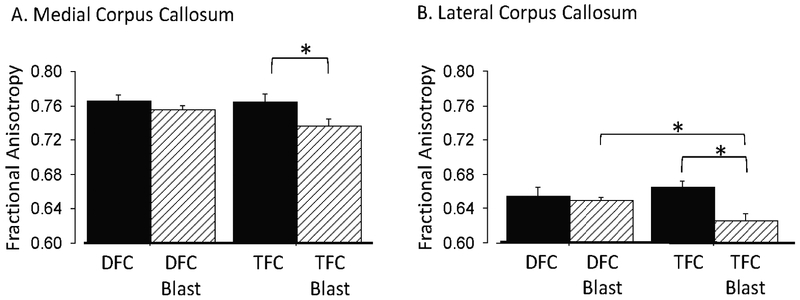Fig. 6. Impact of delay- and trace- fear conditioning (DFC/TFC) on fractional anisotropy in the corpus callosum after blast. A. Medial corpus callosum.
Delay, but not trace fear conditioning prevented a reduction in fractional anisotropy (F1,12 =4.66, p=0.05) due to the effects of the blast. Means: 0.764±0.009 (TFC), n=6 vs 0.737±0.009 (TFC+Blast), n=8. B. Lateral corpus callosum. Delay fear conditioning also prevented the lateral corpus callosum from a reduction in fractional anisotropy due to blast (F1,12 =11.98, p=0.0047). Means: 0.665±0.008, n=6 (TFC) vs 0.627±0.008, n=8 (TFC+Blast).

